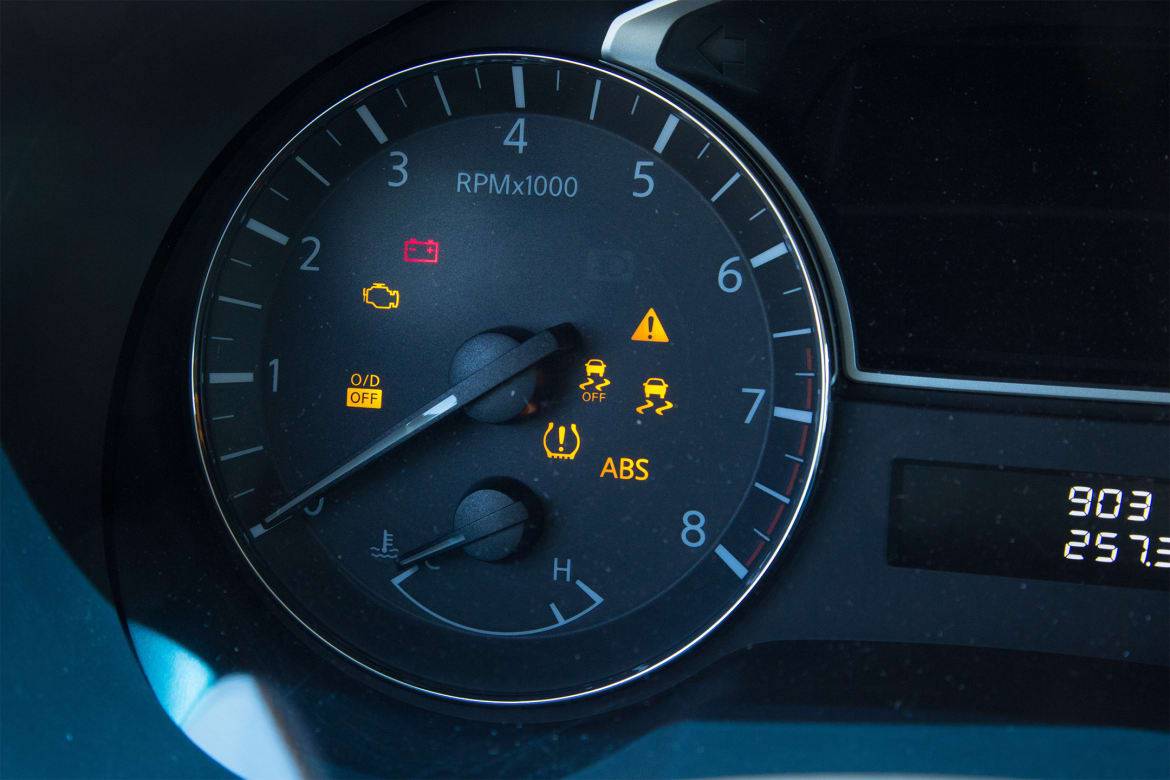Most modern cars have Anti-lock Breaking Systems (ABS) fitted. ABS is a safety feature that prevents the wheels from locking up during braking, allowing the driver to maintain control of the vehicle.
What Is ABS?
ABS stands for Anti-lock Braking System. It is an automotive safety system designed to prevent the wheels from locking up during braking, especially in emergency or slippery conditions. ABS helps maintain steering control and prevents skidding, allowing the driver to maintain better control over the vehicle during hard braking.
How ABS works:
When a driver applies the brakes forcefully, traditional braking systems could lead to wheel lock-up, causing the vehicle to skid. ABS works by modulating brake pressure to each wheel individually.
It uses sensors to detect the rotational speed of each wheel. If it senses that a wheel is about to lock up, it momentarily reduces brake force to that wheel, allowing it to continue rotating.
What are the Benefits of ABS?
Key benefits of ABS:
- Enhanced Control: ABS prevents wheel lock-up, maintaining the driver’s ability to steer the vehicle during braking.
- Shorter Stopping Distances: By preventing skidding, ABS helps reduce the distance required to come to a complete stop.
- Improved Stability: The system contributes to better vehicle stability and control, especially in challenging road conditions.
How To Tell If Your Car Has ABS (5 Steps)
If you are unsure whether your car has ABS, here are some ways to find out:

Credit: www.cars.com
1. Check the Dashboard
When you power up your car, the ABS warning light should illuminate for a few seconds to indicate that it is working correctly. It usually looks like a circle with the letters ABS inside it. If the light does not come on or stays on after a few seconds, it may indicate a fault with the ABS system.
2. Look for the ABS Ring
The ABS system consists of a ring on each wheel hub or another rotating component that looks like a small bicycle sprocket with “teeth” on it. This ring is used to measure the rotation speed of the wheels and helps the ABS system prevent wheel lock-up. If you can see these rings on your car’s wheels, it is an indication that your car has ABS.
3. Pay Attention to Warning Signs
If you notice any of the following signs while driving, it could indicate a problem with your ABS:
- The ABS warning light stays on.
- You feel a pulsing sensation in the brake pedal during braking.
- There is a grinding or buzzing noise when braking.
- The brake pedal pushes back when braking.
If you experience any of these signs, it is recommended to have your car inspected by a qualified mechanic to diagnose and repair any issues with the ABS system.
4. Check the Fusebox
If you want to confirm whether your car has ABS, you can check the fusebox. If there is a fuse labeled “ABS” in the fusebox, it means that your car is equipped with ABS. On the other hand, if there is no such fuse, it indicates that your car does not have ABS.
5. Consult the Owner’s Manual
If you are still unsure about whether your car has ABS, you can refer to the owner’s manual. The manual usually provides information about the vehicle’s features and specifications, including whether it is equipped with ABS.
Knowing whether your car has ABS is essential for understanding its braking capabilities and ensuring your safety on the road. If you are still uncertain about your car’s ABS status, it is best to consult a professional mechanic who can inspect your vehicle and provide accurate information.
What Are The Different Ways to Check for ABS?
How Do You Detect Abs?
To detect ABS in a car, check for the ABS warning light on the dashboard when you start the car. It should illuminate momentarily to indicate that the system is working. Additionally, ABS can be identified by a ring on each wheel hub that resembles a small bicycle sprocket with “teeth” on it.
What Does Abs Look Like In A Car?
ABS, or Anti-lock Breaking Systems, in a car appear as rings on each wheel hub or another rotating component. These rings resemble small bicycle sprockets with “teeth” on them. If there is a fault with the ABS, a warning light will illuminate on the dashboard.
What Are The Warning Signs Of Abs?
The warning sign of ABS is the ABS light on the dashboard. If there is a fault with the ABS, the warning light will illuminate while driving. It indicates a problem with the ABS or the braking system. When you see this light, drive carefully and avoid aggressive braking.
Park your car in a safe place, turn off the engine, and then restart it.
What Does Abs Feel Like On A Car?
ABS on a car feels like a sudden drop in the brake pedal followed by a pulsing sensation. There may be a grinding or buzzing noise, and the brake pedal may feel like it’s pushing back.
How Do I Check If My Car Has Abs Brakes?
If your car has an illuminated ABS light on the dashboard during startup, it likely has ABS brakes.
What Are The Signs Of A Faulty Abs System?
Some signs of a faulty ABS system include an illuminated ABS warning light on the dashboard and unusual pulsing or grinding noises when braking.





